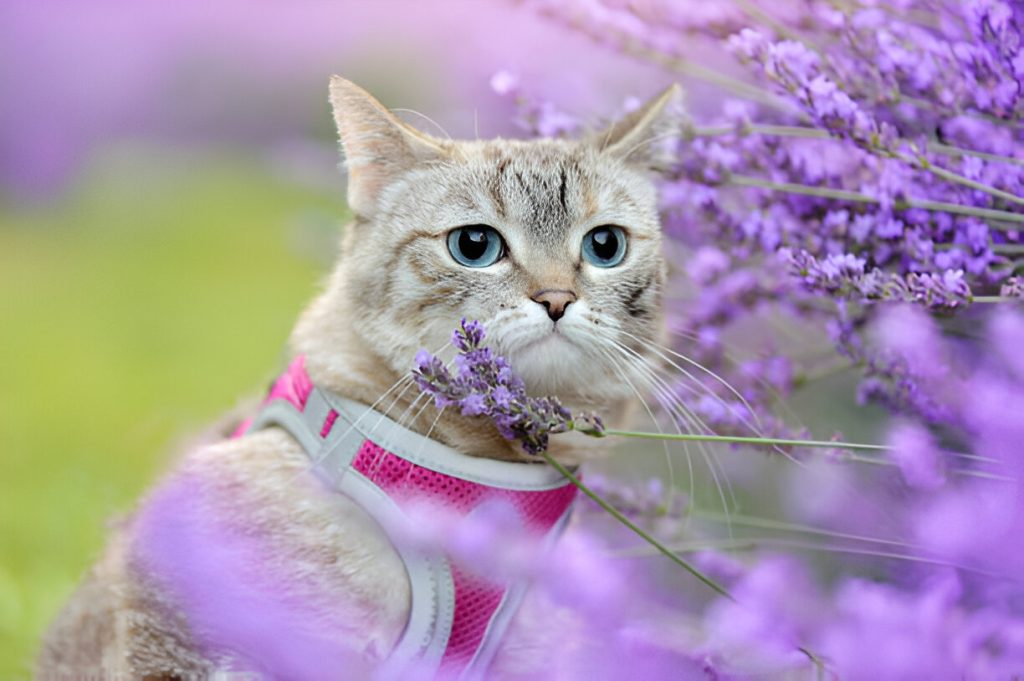Cats are naturally curious creatures, often drawn to new scents and objects in their environment. Essential oils, including lavender, are commonly used in households for relaxation and freshening the air. However, while lavender is known for its calming effects on humans, it can have different consequences for pets. Understanding how to use it around a feline companion is crucial to ensuring their well-being.
This raises an important question: Is lavender oil safe for cats? While some pet owners believe it offers soothing benefits, others worry about potential risks. Knowing how to use it responsibly and recognizing any warning signs of adverse effects can help keep a pet safe. With proper precautions, it may be possible to enjoy the benefits of this oil while prioritizing a cat’s health.
1. Use Only High-Quality, Pure Lavender Oil
Not all essential oils are created equal. Some contain additives, synthetic fragrances, or chemicals that can harm pets. When choosing lavender oil, choose a high-quality, pure product free from artificial ingredients. A diluted version is also preferable, as highly concentrated oils can be too potent for a cat’s sensitive system. Checking the label for purity and ensuring it is sourced from a trusted provider can significantly affect its safety.
2. Avoid Direct Application on Fur or Skin
Unlike humans, cats have difficulty processing certain compounds found in essential oils. Applying lavender oil directly to their skin or fur can lead to irritation, excessive grooming, or toxicity. Even a tiny amount may be absorbed into the bloodstream, potentially causing issues over time. Instead of direct application, consider indirect methods such as placing a diffuser in a well-ventilated room, away from areas where the cat frequently rests.
3. Keep Diffusers and Oils Out of Reach
Naturally curious pets may investigate an open essential oil bottle or a running diffuser. Ingesting even a small amount can be dangerous, leading to symptoms like drooling, vomiting, or difficulty breathing. Keep oil bottles securely closed and stored in a location the cat cannot access to prevent accidental exposure. If using a diffuser, ensure the mist does not settle on surfaces the cat frequently touches, such as bedding or food areas.
4. Monitor for Signs of Sensitivity or Discomfort
Every cat reacts differently to scents in its environment. Some may be unaffected, while others could show signs of distress, such as sneezing, excessive licking, or unusually lethargic behavior. If any unusual behavior is noticed after exposure to lavender oil, discontinue use immediately. In cases where symptoms persist, seeking veterinary advice is the safest course of action. Monitoring reactions closely helps ensure a cat’s safety and comfort.
5. Allow for Proper Ventilation in the Home
A poorly ventilated space can trap strong scents, making them more overwhelming for a cat’s keen sense of smell. If using lavender oil, ensure adequate airflow by opening windows or using fans. This helps disperse the scent while reducing the chances of respiratory irritation. Creating an environment where fresh air circulates freely makes it easier for pets to avoid prolonged exposure to concentrated fragrances.
6. Consider Safer Alternatives for Calming Effects
While lavender essential oil is often linked to relaxation, its use around pets requires caution due to potential sensitivities. Instead, pet-safe alternatives like valerian, chamomile, or CBD-based products specifically formulated for animals can provide similar calming effects without the risks associated with essential oils.
These natural options prioritize pet safety, offering a gentle and effective way to support relaxation and overall well-being. By exploring safer alternatives like CBD-infused pet products, owners can find a solution that aligns with their furry companion’s needs while minimizing potential hazards.
Ensuring a cat’s well-being should always be a top priority when introducing new scents into the home. Is lavender oil safe for cats? The answer depends on how it is used. By following these vet-recommended precautions, pet owners can create a safer environment while still enjoying the calming aroma of essential oils.

